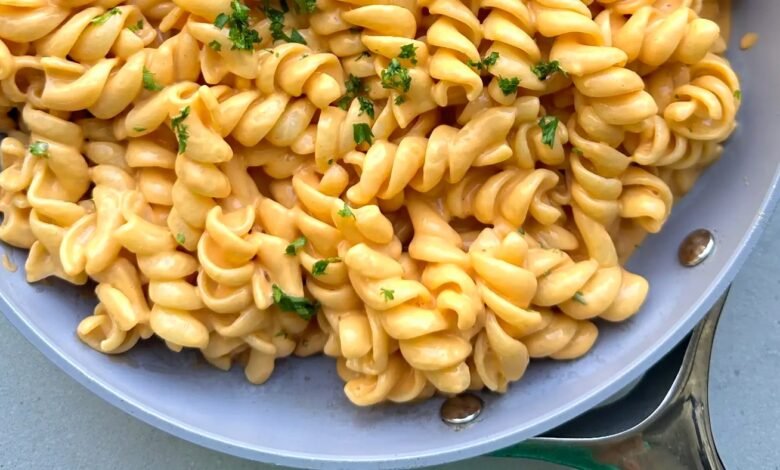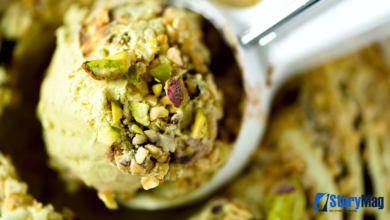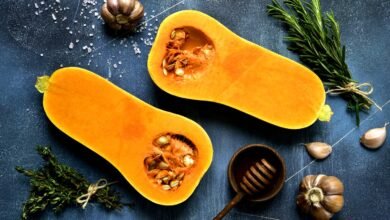6 High-Protein Pasta Recipe for a Satisfactory Meal

Getting more protein is important for everyone, not just people who are limiting their carb intake or trying to figure out how to make sure they get enough protein as a vegetarian.
High-protein pasta, which is often made with plant proteins, is a great way to get more protein without giving up noodles every once in a while.
The Dietary Guidelines for Americans stress the importance of nutrient-dense plant proteins like those found in beans, peas, and lentils, which are used in many of the high-protein pastas we’ve talked about here.
You can find a high-protein pasta that fits your needs, whether you want to take in more protein to build muscle or make more plant-based, nutritionally balanced meals.
EXPLORE THE CONTENTS
Types of High-Protein Pasta
High-protein pasta is very good for you because it has more protein than regular pasta. Most traditional pasta is made with wheat flour, and a 2-ounce amount has about 7 grams (g) of protein.
For pasta to say “high-protein” on the label, it must have 20% or more of the daily protein value in each piece. This is the same as getting at least 10 grams of protein in one meal.
Some of the pasta in this group may not say “high-protein” right on the package, but each one contains at least 10 grams of protein. Look at the nutrition facts and ingredient labels very carefully to make the best choice for your tastes and health needs. [2]
1. Soybean Pasta
Beans, which are used to make soy pasta, are known to have a lot of health benefits and a high protein content. Soy protein is about the same quality as protein found in cow’s milk and eggs, which are often used as comparisons.
Notably, each 2-ounce portion of soybean pasta has an impressive 22–25 g of protein.
Soybean pasta usually only has soybeans listed as an ingredient, but some brands add water to their recipes.
Research shows that soy protein can help build muscle and make you stronger. Some other possible benefits of soybeans are that they help with hot flashes, slow down cognitive loss, and lower cholesterol.
Researchers think that these benefits come from soybeans’ healthy parts, such as their protein, polyunsaturated fat, and isoflavone (a plant compound) abundance. [3]
2. Edamame Pasta
Edamame are green soybean pods that are picked when they are about 80% mature. The nutritional value of edamame pasta is about the same as that of soybean pasta. Two to three ounces of it have 22 to 25 grams of protein. [4]
Usually, edamame is the only thing that goes into this high-protein pasta. Edamame pasta is sometimes made with mung beans or mung bean flour.
3. Chickpea Pasta

Chickpeas, also called garbanzo beans, have a spicy flavor and can be used in many different ways in cooking. Chickpea pasta is another popular choice for people who want a high-protein pasta. Either chickpeas or chickpea flour are the main ingredients used to make it.
Some types of chickpea pasta also contain tapioca, pea starch, or lentil flour. Two ounces of some brands can contain 11 to 15 grams of protein.
Also, chickpeas are full of important nutrients that are good for your health, like iron, calcium, and potassium. A diet high in chickpeas is good for your heart health, blood sugar control, and gut health.
4. Green Lentil Pasta
The plant family Fabaceae includes lentils, beans, and peas. They are lens-shaped seeds that you can eat and come in many colors.
Most of the time, green lentil flour is the main ingredient in green lentil pasta. Some brands might add things like brown rice flour, quinoa flour, green pea flour, or other grains. Each 2-ounce helping of this green high-protein pasta has 11–14 g of protein.[5]
Like beans, lentils are full of fiber, nutrients, and chemicals that are good for your health, like antioxidants. Scientists have found that eating beans regularly can help keep you from getting diseases like diabetes, cancer, and heart disease.
5. Green Pea Pasta

Garden peas, which are known for being small and round, are another popular bean used to make high-protein pasta. For green pea noodles, you need green peas or green pea flour. In some brands, things like water or garlic powder may be added. Every 2-ounce serving of green pea pasta has 11 to 12 grams of protein.
Peas, like other legumes, are full of important nutrients and substances that fight inflammation and free radicals. There is evidence that eating peas can help control the effects of metabolic syndrome. Blood sugar and lipid levels that aren’t stable, high blood pressure, and being overweight are all signs of this disease.
6. Wheat Pasta with Protein
Traditional pasta is made from wheat flour, but some brands add protein-rich products to their wheat-based pasta to increase its protein content. These changes could include soy protein concentrate, lentils, chickpeas, and lupin bean flour, among other things.
A 2-ounce amount of these kinds of high-protein wheat pasta has between 10 and 24 grams of protein. [6]
Conclusion
There are many kinds of high-protein pasta to choose from, so it can fit a wide range of food needs and tastes.
There are different kinds of pasta to help you reach your goals, whether they are to eat more protein, follow a certain diet, or try new foods.
It is important to keep in mind that these types of pasta have different tastes and textures, as well as different nutritional values and lists of ingredients.
Don’t be afraid to try different kinds until you find the one that you like, that makes you crave pasta, and that is good for you.







